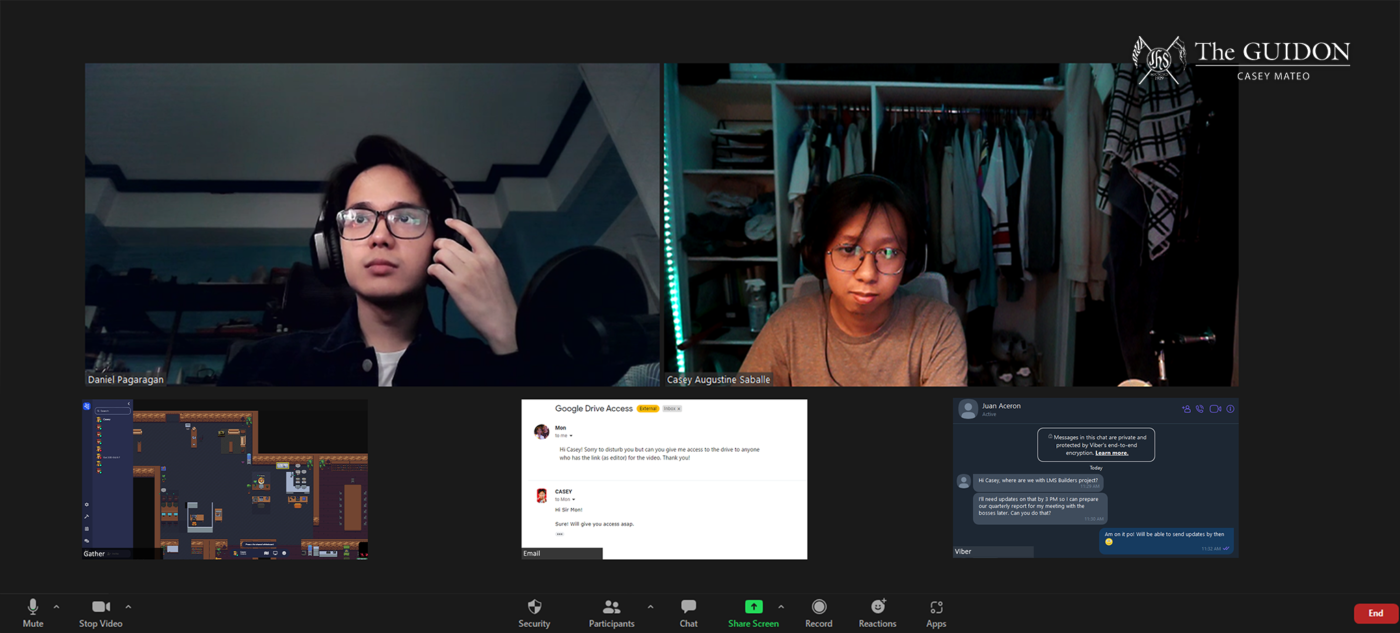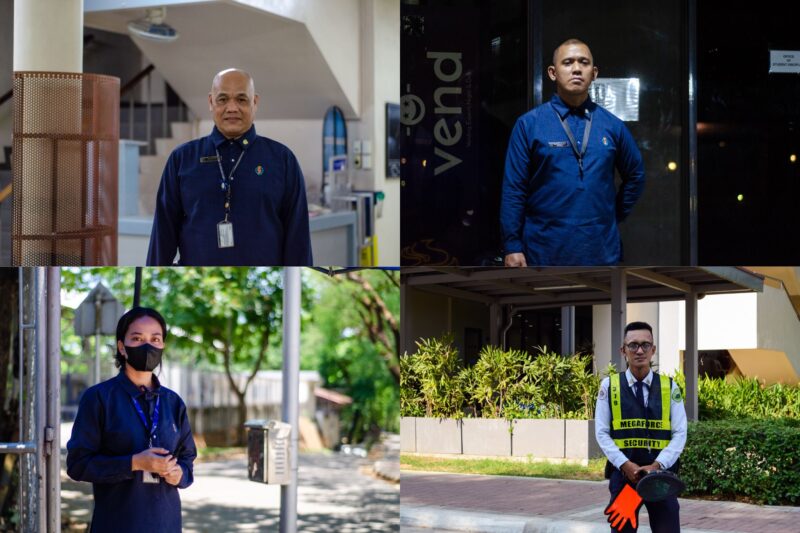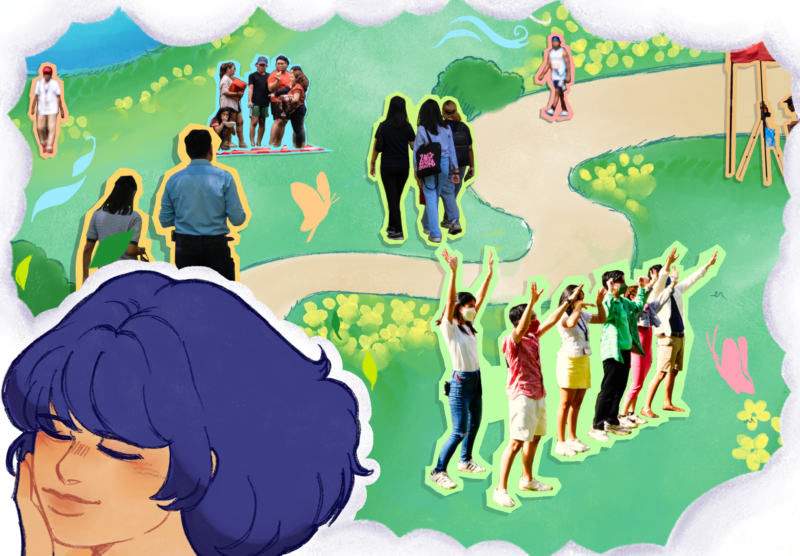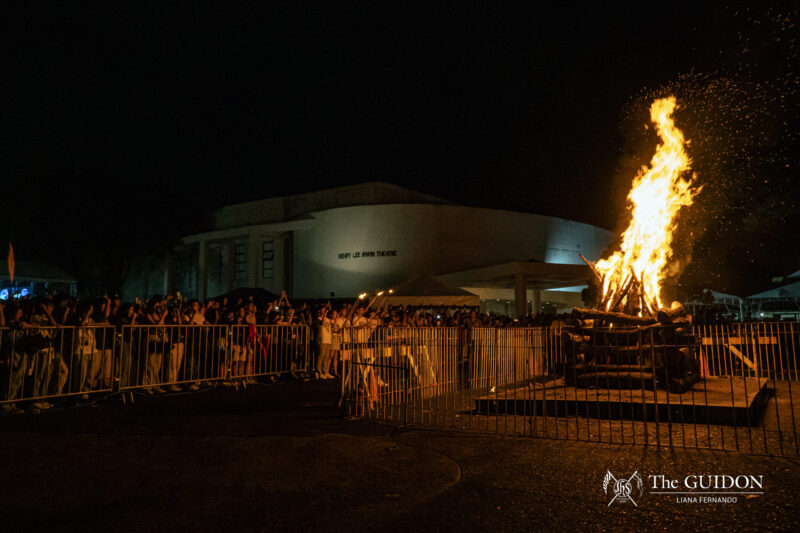PRE-PANDEMIC INTERNSHIPS normally begin with onboarding and office tours. Once the standard two to three month work period ends, the offboarding process follows; preparing interns to leave with newfound friendships and a taste of the “real” world.
As the pandemic prolonged, quarantine restrictions forced internships to migrate their office walls to the four corners of the screen, its social space was thus reduced to monotonous virtual interactions.
Whether it’s to keep themselves productive or to get a sense of community in a socially distanced landscape, three college students share how virtual internships nonetheless remain vital in transitioning from a pandemic to post-pandemic reality.
Webbed intentions
In hopes of gauging potential careers, Research and Project Intern at John J. Carroll Institute on Church and Social Issues Ryan Gorospe (4 AB POS) pursued his second internship immediately after finishing one at the Office of Senator Grace Poe (SGP). He shares doing so for “growth and experience.”
Similarly, former Rappler MovePH intern Angelyn Turiano from Ateneo de Naga shares that engaging in journalism after interning at the office of Senator Kiko Pangilinan helped her sustain connections and productivity and practice activism through writing.
On the other hand, dismayed that the org culture didn’t feel the same, once “org-active” Jenny* (4 BS COMTECH) explored more engaging internship opportunities to exercise her skills and passions. Comparing her experience in her three voluntary Marketing and Public Relations internships and one at EON Group for practicum purposes, she notes that volunteer interns are treated with flexibility when it comes to workload.
While internships may no longer be conventionally bound to the on-site office experience, Gorospe, Turiano, and Jenny assure quarantined interns that they still have as much to learn as pre-pandemic interns did.
Virtual office
Once a remote option pre-pandemic, virtual internships are now the norm. The challenge of effectively transforming integration and bonding activities to virtual mentorships rests on firms. Given this reality, internship culture is changing from a socially-charged experience to one with a heavy workload.
Turiano notes that systems vary among internships. In contrast to the structured intern work hours at the Senate, she shares that clocking in and out of their platform Slack had no real bearing in an output-based credit system.
Gorospe notes that there are also attempts to “mimic working environments” through virtual office tours, work hours, and supervisors’ anecdotes. He recalls having structured schedules and reminders during his SGP internship, as well as meetings he was required to attend.
Attesting that friendships can still be forged virtually, Gorospe adds that his daily tasks were opportunities to get to know his co-interns beyond the program. “At times, we even called after work and then saw each other at work [the next day], so it’s like a simulation of a Friday night out with your coworkers,” he shares.
However optimistic his experience may be, the virtual migration ultimately does not preclude hurdles. Interns today are challenged by time zone differences, unreliable internet connection, and uncertainty regarding organizational culture and hierarchy.
Recalling how her supervisor denied her request to skip a meeting for academic purposes, Jenny reminds student interns the importance of proper time management. Turiano advises approaching the strictness with growth and improvement in mind, while Gorospe reassures that there’s always room for levelling off with supervisors despite the hierarchy.
Post-internship
Reconfiguring virtual internships to comply with health protocols is as challenging for offices as it is for students adjusting to technological challenges. As the virtual internship culture solidifies, it is clear that both parties remain susceptible to its shifting demands. One thing remains certain, though: Internships remain avenues for students to collaboratively grow and learn.
Gorospe emphasizes the delineation of universities and workspaces. Whereas universities have magna cartas detailing students’ rights, internships do not. Hence, interns have to “take the leap of faith” and slowly “adapt to the culture,” Gorospe notes. Sharing practical tips, he advises, “First, know your interests. Second, always have a CV prepared. Lastly, take risks.”
Jenny adds, “Don’t close yourself off to opportunities that you think you’re not qualified for. If it’s something you’re interested in learning, let the company say no to you. Don’t say no to yourself.”
More than just an avenue for personal growth, internships are bridges to the real world of work. As such, beyond clocking in and out of workspaces, Turiano advises to keep the “privilege bubble” in check amid a distanced learning reality. “We must continue to stand firm with our beliefs and principles, and use the knowledge and skills gained in our internships to mobilize under an unsatisfactory regime.”
*Editor’s Note: The name of the interviewee has been changed at their request in order to protect their identity and privacy.







